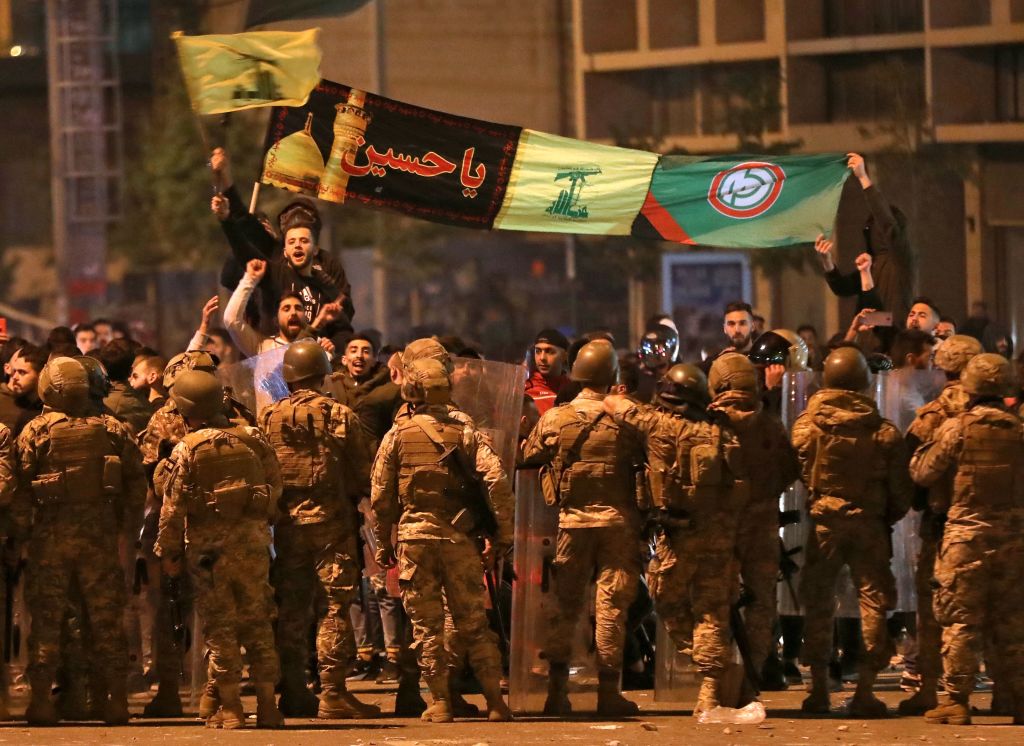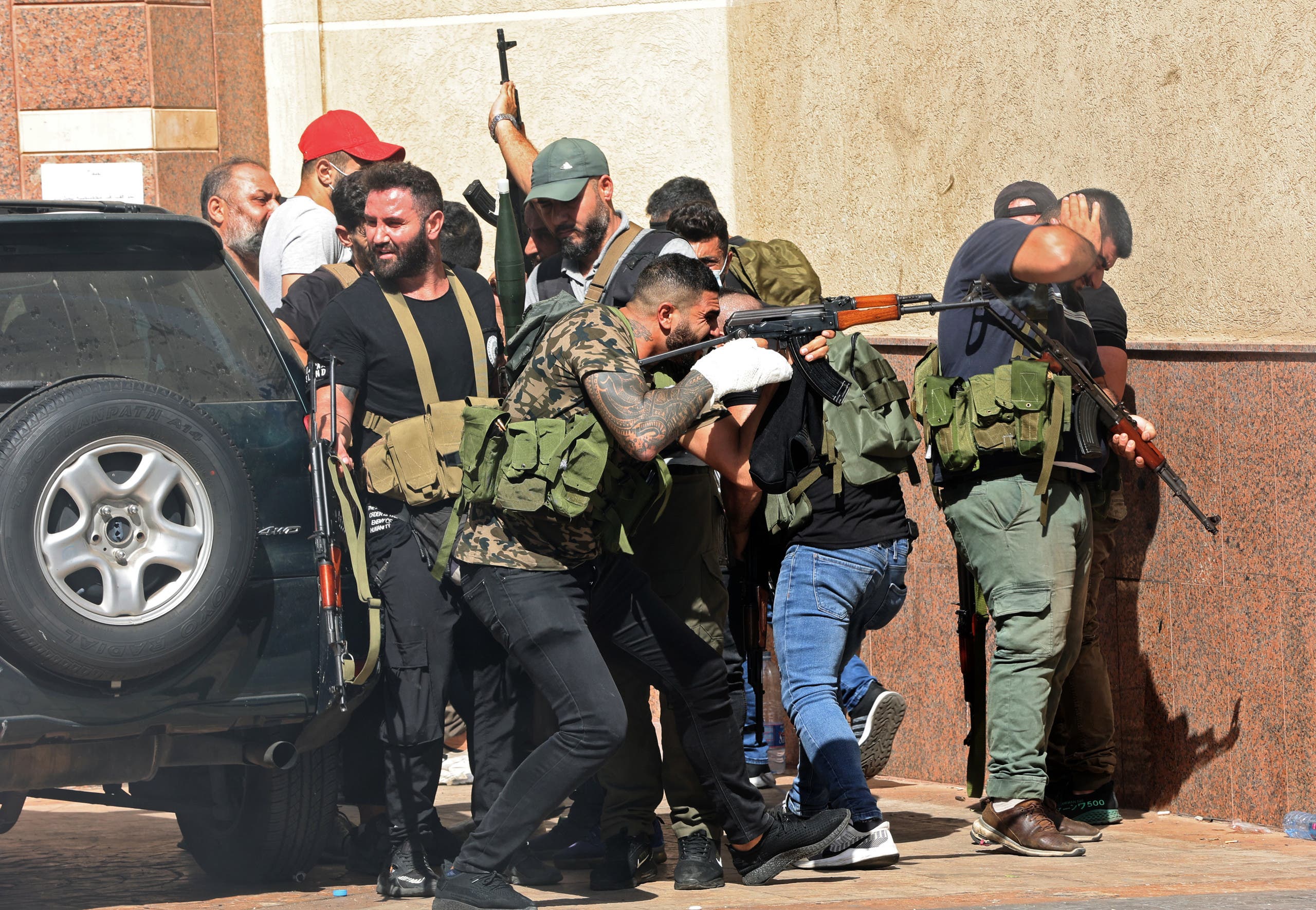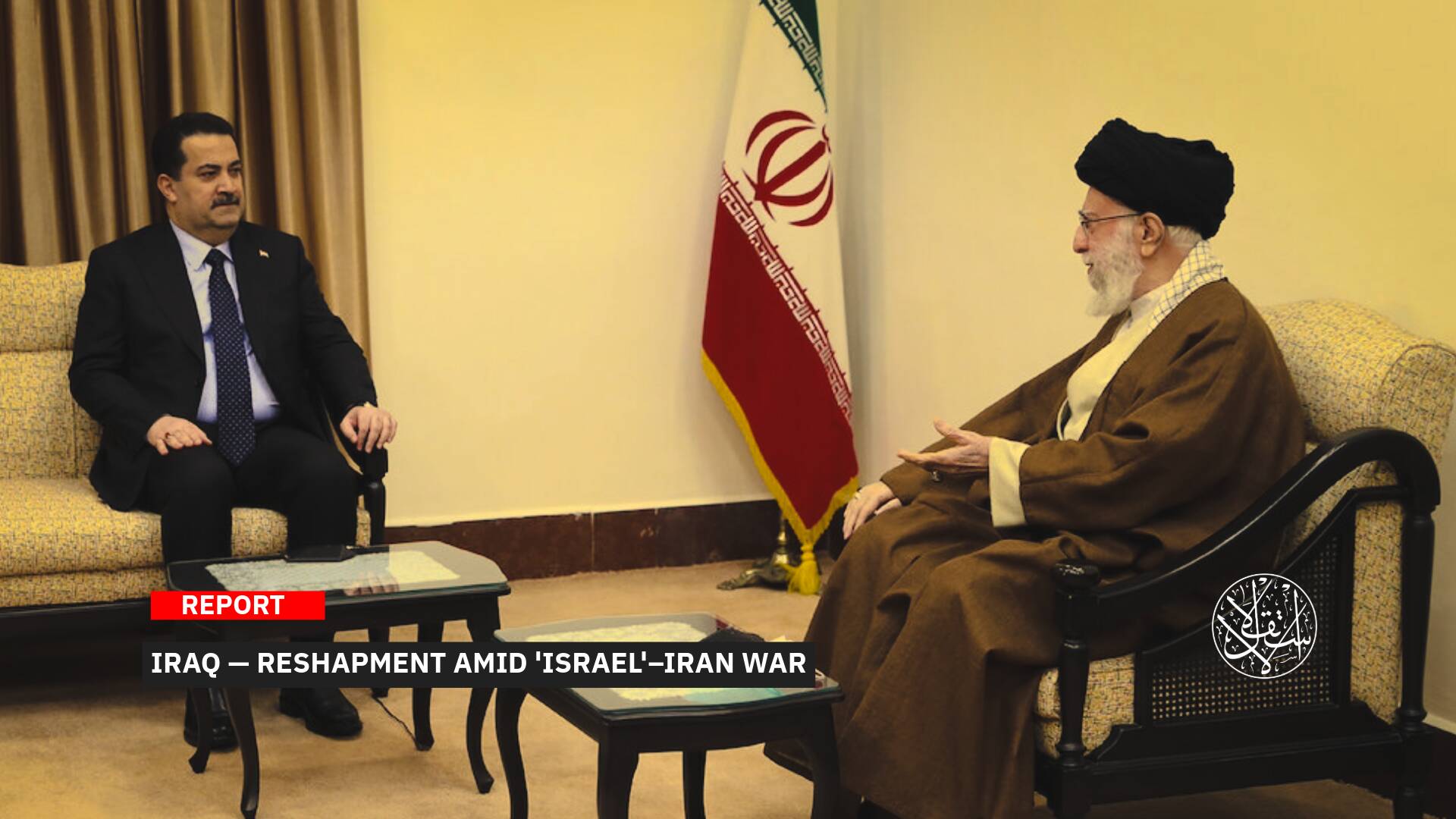Lebanon Awaits Change With the Second Anniversary of the October Revolution

Two years ago, on the 17th of October, the Lebanese experienced a scene they were not used to. They ignored sectarian, regional and political affiliations. They revolted against the political class that controls the country and is almost completely controlled by the Hezbollah militia.
Several question marks were raised about what the “October 17 Revolution” achieved despite the political authority remaining in power since the end of the civil war (1975-1990), amidst a stifling economic crisis and a major spread of the Coronavirus and after the horrific disaster of the Beirut Port explosion on August 4, 2020.
Today; Two years after the start of the revolution that toppled two governments, the Lebanese commemorate that revolution, activists assert that their demands are still the same, and that they are going to clean up the Lebanese political scene to the fullest, especially from the Shiite alliance (Amal Movement and Hezbollah).
While many Lebanese have abandoned their dream of political change in the face of the chaos of the successive disasters that hit Lebanon and the future that seems bleak, they decided to search for a new life outside the walls of Lebanon.

Fail and Fall Back
On October 17, 2019, the Lebanese government headed by Saad Hariri announced its intention to impose a fee on free communications through WhatsApp, after previously added fees on gasoline and tobacco.
The latest decision ignited the anger of thousands of Lebanese, who, weeks ago, began to perceive signs of a severe economic crisis, they took to the streets in protest and to express their rejection of the decision.
The protesters also held the ruling political class responsible for the deterioration of living conditions and the failure to provide basic services such as electricity, water and sanitation, in light of the worst economic crisis in Lebanon's history, which forced the government to back down from imposing the financial fee.
But the popular protests continued after that for months on end, the protesters demanded early parliamentary elections and the return of the looted funds, the accountability of the corrupt, the departure and accountability of the rest of the components of the ruling class, which they accuse of corruption and incompetence, and ending the hegemony of the Hezbollah militia over state institutions, which is one of the most important causes of the crisis in Lebanon.
However, the level of protests declined with the formation of a new government headed by Hassan Diab in early 2020, which included technocratic figures who had been named by the political parties that had dominated Lebanon for decades.

The Lebanese political researcher, Abdurrahman Selahaddin, believes in a statement to Al-
From another point of view, the Lebanese writer and political analyst, Mahmoud Alloush, said in a statement to Al-Estiklal that: “The October 17 uprising was an intersection of interests between an organized civil movement that had no political influence, and a people yearn to get rid of the sectarian regime; But do not have a realistic vision for change. This led, with time, to a decline in the momentum of the protests due to the frustration of the people and the exacerbation of economic and living difficulties.”
Observers believe that many factors also contributed to the decline of the popular movement and its complete absence, such as “the spread of the Coronavirus, and the security forces’ suppression of several movements that were interspersed with riots, the Lebanese were preoccupied with getting their money from banks in the face of the accelerating economic collapse in the country, and last but not least the horrific explosion of Beirut Port.”

“The most important reasons for the failure of the October 17 uprising are that it raised great demands, such as the overthrow of the political regime, this brought it into conflict with the entire political regime, in addition to the absence of a clear political project and leadership for the movement, which turned it into an unorganized and unsustainable movement, and this is what happened, and the French initiative after the Beirut explosion that formed a lifeline for the Lebanese political regime and brought it back to life,” the political analyst points out.
Two years after the October protests, Alloush says: “The events of the last two years have proven that sectarian identities in Lebanon are still superior to the national identity in the process of creating societal awareness, this helped the political regime to maneuver as well, and emphasizing that its continuation is a guarantee of the interests of the sects it represents, without an inclusive Lebanese national identity, the opportunities for change seem very limited.”
“The Shiite alliance have sought, since the beginning of the protests, to undermine it and secure protection for the political regime, which in return gave it legitimacy and a cover for its weapons, and it treats any threat to this regime as a threat to its influence in the country,” the Lebanese writer points out.
As for the researcher, Abdurrahman Selahaddin, he affirms that “the Shiite alliance responded to the October 17 protests by various means, they also tried to isolate the majority of the Shiites from it, because of their realization that a large segment of the Shiites began to tweet outside their flock, and that the emerging Shiite middle class has different political perceptions than the perceptions they still present.”

Revival of the Revolution
The Lebanese Shiite alliance launched an Ashura parade in Al-Alam Square in the Lebanese city of Tyre, in conjunction with the intention of the Lebanese to commemorate the second anniversary of the start of the October 2019 protests, and this is in anticipation of a sit-in announced by activists in the same square.
According to activists, the goal of the “Ashouri parade” was to besiege the revolutionaries of Tyre to prevent them from re-establishing the momentum of the protests in Al-Alam Square in Tire, and reviving the pulse of the street.
Hezbollah was not satisfied with that; But it went behind the escalation and raised sectarian slogans against all political components in the country.
To restore the momentum of the October uprising, activists are counting on the anger of the Lebanese people over the continuing deterioration of living conditions in an unprecedented manner, in light of the worst economic crisis afflicting the country, the deadlock in the investigation file of the Beirut port explosion, which shook all of Lebanon.
The explosion of 3,000 tons of ammonium nitrate on August 4, 2020 in the port, where it was stored for about 6 years, about 200 people were killed, about 6,500 were injured and caused significant material damage.
The investigation into the Beirut port explosion case has made little progress, amid attempts by some political parties to obstruct the investigation.

October 14, 2021, was a painful beginning that might end the calm that prevailed among the Lebanese sects for 31 years.
The vicinity of the Palace of Justice in the Tayouneh area in Beirut witnessed armed clashes following the gathering of Hezbollah and Amal supporters to sit-in against the judicial investigator in the port case, Judge Tarek Bitar, as a result of which 7 people were killed and dozens were injured.
Press reports spoke of continuous terror in the Lebanese street, especially since the armed clashes that took place in Tayouneh imposed two options: “The first is to go down to the battlefield and complete the war. The second is the search for an impossible solution amidst the deep disagreement and hostility between the political and sectarian components.”

Despite all the crises, Lebanese writers and activists believe that the Lebanese uprising managed to achieve significant milestones, it crossed minefields in a country that suffers from an economic crisis and severe political polarization, in which the interests of regional and Western countries are in conflict.
They also believe that the uprising is continuing to destroy the rules of coexistence with the ruling political elite with unprecedented determination, and the demolition of the rules and mechanisms for the reproduction of power in the country.

Lebanon is Hostage
Lebanese politicians say that the Iranian-backed Hezbollah is responsible for the deteriorating economic conditions, due to its interference in the politics of neighboring countries, what made the country hostage and prevented it from being helped by the international community, while in previous financial crises in Lebanon, Arab and foreign countries intervened to extend a helping hand to Beirut.
In the same context, Dr. Tariq Shandab, professor of international law, said in a statement to Al-Estiklal: “Hezbollah, the Amal movement and some other political currents are all present in the new Lebanese government through ministers close to them, the Najib Mikati government, which was formed in September 2021, is nothing but a recycling of the corrupt political class, and only the faces have changed.”
“Hezbollah is trying to extend its authority over Lebanon by all means. After taking control of some security centers in the country, it is now trying to control the judiciary by intimidating the judicial investigator in the Beirut port case, to disqualify him or force him to resign,” Shandab added.
Especially that Hezbollah considers the survival of Bitar a challenge to it, and since it and its allies (the Amal Movement and the Marada Movement) announced a boycott of government sessions until his dismissal.
From his point of view, the political researcher, Abdurrahman Selahaddin, sees in a statement to Al-Estiklal that: “Today, Hezbollah needs to announce its position on the idea of Lebanon becoming a modern state that is not governed by the principle of sectarian quotas, an idea demanded by the Lebanese youth.”
“The responsibility for what led to the deterioration and exacerbation of crises and conditions in Lebanon is borne by the political class, including Hezbollah and its opponents,” Selahaddin also points out.

It is noteworthy that the Lebanese civil war broke out in 1975, and it was a fierce war that lasted for 15 years, it ended in 1990, and its human losses amounted to about 150,000 dead, and about a million others were displaced.
However, the Lebanese civil war did not erupt suddenly, but was preceded by class, economic and social crises resulting from the spread of poverty and destitution, and sectarian political crises divided between the demands of Sunnis, Shiites and Christians, in addition to external crises centered on the issue of Palestine.
Sources
- Hundreds gather on rainy Sunday to mark the two-year anniversary of the Oct. 17 uprising
- Summary of the first year of the Lebanese October 17 revolution [Arabic]
- The events in Lebanon herald the return of civil war.. Will the new Taif agreement quell it? [Arabic]
- The Shiite alliance in Lebanon blocks the way for attempts to revive the October Revolution [Arabic]











